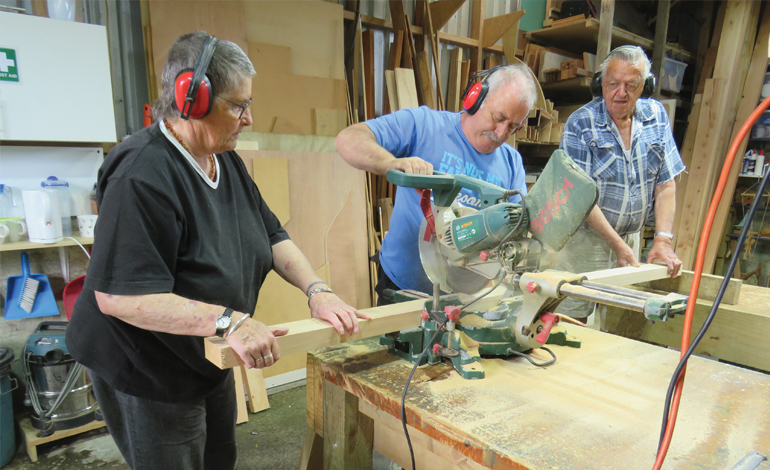After months of planning, the Wood Street revitalisation project in Kaipara got rolling just before Christmas with key changes implemented following community co-design workshops.
The project was initiated by the Mangawhai Business Association, who first approached the council in 2019 seeking a solution to ease the significant traffic congestion and pedestrian safety issues in and around Wood Street.
Association chair Alan Corkin says with changes the area will better accommodate local residents and the influx of summer visitors wanting to access the Wood Street area.
“Parking is essential to the health of the businesses in the area, but cars create congestion problems and safety concerns. The new layout attempts to resolve these issues and encourage the public to spend more time in Wood Street, ultimately benefiting the local retailers.”
Using what it calls a ‘tactical urbanism’ approach, the council collaborated with the business association and community and tested layout designs to create a more people-friendly area. The latest interim design, in place and tested from December 2020, is 90 percent funded by the Transport Agency as part of its Innovating Streets programme.
Building on last year’s trial and ongoing community co-design workshops held through 2020, some of the key changes include a one-way traffic system on Wood Street first trialled over summer last year (2019/2020). The community feedback was positive, so it was implemented again.
The design also incorporated upgrades to parking areas, including more off-street carparks, with the focus on parking away from the shop fronts and in large designated areas at the back.
Aside from the one way system, some of the most popular ideas generated at the community workshops were to create off-street parking, increase the greenery in the area, implement a more people-friendly, pedestrian-only area between shop areas, greater accessibility, and a focus on art.
Mangawhai programme delivery manager Tim Manning says it’s been great to have the community involved in directing the design of Wood Street.
“With the iterative ‘tactical urbanism’ approach we’ve been able to try out ideas and build on them. There are regular opportunities for the community to let us know what they think, so the project team can gauge what’s working and what’s not.
“If something isn’t working, we can change it, so we can keep improving the area. Future changes will be based on real time feedback.”
Kaipara District Council community advisor Gail Fotheringham says community collaboration has been integral to the success of the interim design.

“The Mangawhai Business Association has really led the way on this project. All of the changes have been collaborative, through multiple co-design workshops held throughout this year. Each community workshop has informed the next one.
“As in any design process, not all ideas have made it through to the live project stage. The technical team has tried to realise multiple themes in an area that was not originally built to cope with the increase in population, vehicle size and volume that we are now experiencing. “The interim design, which is now in place, has been a huge effort by many, many people, and I want to acknowledge the work of the various community groups and members working so hard on this project.”
Community members banded together to build the timber seating for many of the new shared space areas, while the council’s parks team led a volunteer day planting low maintenance and drought resistant native plants. Planters were provided by a local concrete company.
The road artwork was spearheaded by local artist Aaron McConchie in collaboration with Mangawhai Artists Incorporated. The group also ran a volunteer day getting locals painting the water ripples at the entrance to Wood Street, sting rays, whales, and flounder.
Aaron McConchie says it was a challenge to create 2D elements for the pedestrian and shared spaces while being mindful of the multiple uses, safety concerns, special paint with limited colour palette as well as the variable surfaces to be painted on.
“The overall design for the painting is of the connection to the sea and the natural environment below the waves.
“There is a lot more to come which will continue to help liven up the shared spaces and encourage creative uses. “The street painting is the first step in defining the personality of Wood Street. I hope that with integrated/multi-purpose signage and lighting we can incorporate other elements of native fauna and flora and highlight the rich pre-colonial history of the area.
“While there is more painting to complete the artwork throughout the summer, we couldn’t have got this far without the efforts of our great community volunteers.”



